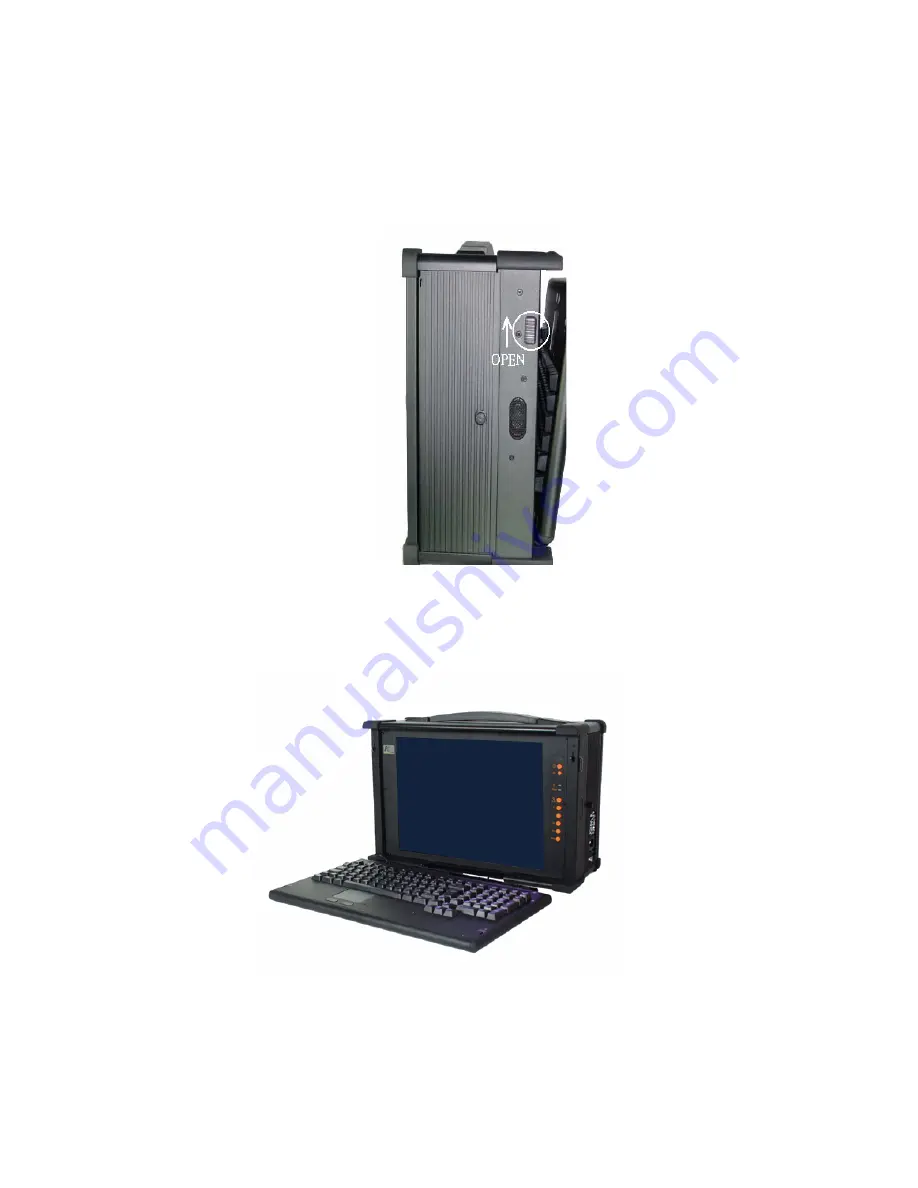
You access the front panel controls by first disengaging the keyboard. Disengage the
keyboard from the chassis latches by sliding the latch tabs on both sides of the chassis
upwards as shown, and simultaneously pulling the top part of the keyboard away from
the chassis.
The keyboard is still
hinged on the bottom by
latch bolts.
Lay down the keyboard.
If you wish, you may
use the tilt-up feet
located on the bottom of
the chassis.
Note
:
The keyboard will fall down once the latch tabs have been released. You
MUST
support the keyboard when releasing the latches.
Chassis Front View
10
Summary of Contents for ATLAS slim 14
Page 31: ...30 ...












































